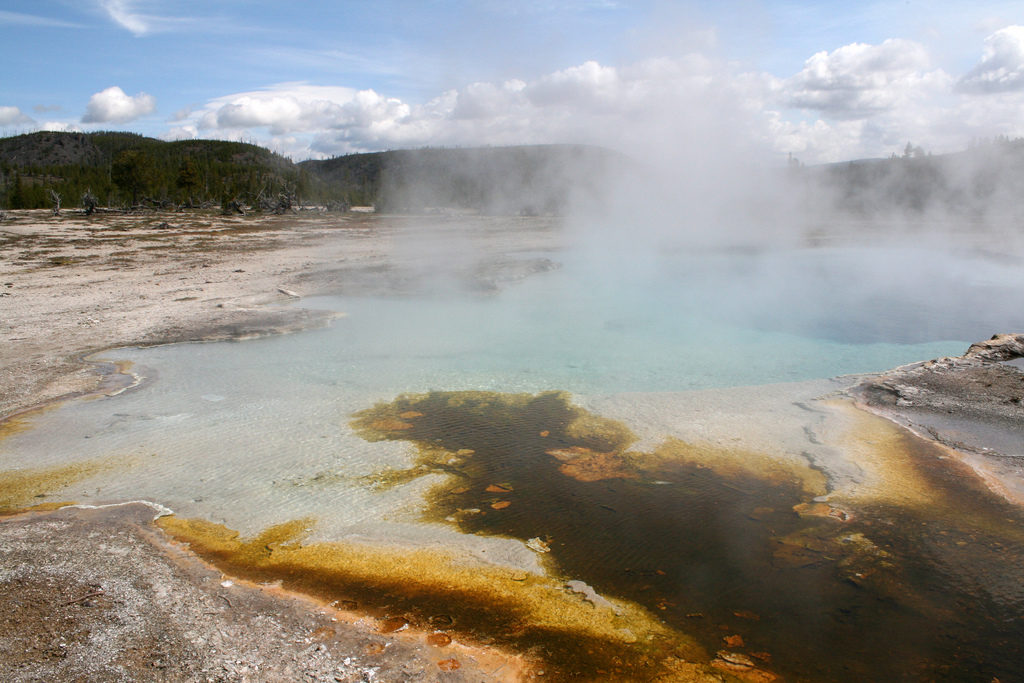
Despite being rich in geothermal resources, it was only recently that Canada announced the funding for the first geothermal power plant in the nation. DEEP Earth Energy Production Corporation will lead the development of the first such power plant in Saskatchewan. As Canada moves towards a cleaner environment, the geothermal industry prepares to take off.
On January 11, Prime Minister Justin Trudeau announced federal funding for Canada’s first geothermal power plant near Estevan, Saskatchewan. The federal government is providing half of the estimated $51.3 million for the project which will be overseen by DEEP Earth Energy Production Corporation (DEEP). The resulting plant will provide enough energy to power around 5,000 homes. Emissions will be reduced by the equivalent of 7,400 cars. Around 100 jobs are likely to be created by construction.
A historical first
When one considers Canada’s vast geothermal resources, it seems surprising that DEEP’s will be the first such power plant. The Canadian government’s support is a historical first for the nation. Yet it will also draw on oil and gas drilling techniques readily available in the region’s energy industry.
Additional facts:
– Federal funding comes through the Natural Resources Canada’s Emerging Renewable Power Program.
– Excess heat will be channeled to a 45-acre commercial greenhouse.
– Canada joined the International Renewable Energy Agency on January 9.
DEEP also announced the successful completion of the test well for the geothermal project. The vertical well reached 3,530 meters on December 16 making it the deepest well ever drilled in Saskatchewan. A second well is planned in the same area to complete initial studies by spring. Once the bank’s requirements are complete, construction can begin which will take another year and a half.
CEO and co-founder Kirsten Marcia compares the timeline to traditional mining. She states, “It’s no different than diamonds or gold. We are approaching this renewable resource in the same way.” Describing the process as similar to “heat mining,” Marcia brings a rich background as both a geologist and an administrator. She is also enthused about the “wonderful opportunity” to apply her “experience to a renewable project.”
Geothermal in Canada
With Canada as a nation pursuing ambitious renewable energy goals, geothermal represents a development that could help meet those goals both in the short and long-term. Geothermal power essentially takes heat from below the surface in the form of steam or hot water to supply heat pump systems and as a way to produce electricity. Canada has numerous sources of geothermal energy, especially in Western regions.
The initial cost of building geothermal facilities is expensive but “lifetime costs are low because the fuel source is free, it is located at the generation plant site (no transportation costs) and it is renewable.” In addition to being both a clean and renewable energy source, geothermal plants provide baseload power throughout the day with minimal disruption. Such plants are also unaffected by changes in weather conditions.

The ideal locations in Canada for geothermal power production are British Columbia, Alberta and Saskatchewan which have rich geothermal resources. And the very best are in British Columbia and the Yukon which helps explain why geothermal has not advanced further in Canada. These regions are already well-supplied with low-cost hydropower from well-established sources. Until recently Saskatchewan has had the low-cost fossil fuel needed to meet its needs but is increasingly recognizing the geothermal opportunity.
Lack of government support for the geothermal industry has also been an issue. Funding for industry organization has been limited. It is difficult to get geothermal leases in B.C. for use of oil and gas fields which have already done much of the heavy lifting. Ontario did not include geothermal in its list of course that could be sold back into the energy grid.
It may be that Canada is simply blessed by an abundance of energy riches. Easier options than geothermal exist and are in operation by well-established competitors. To establish what is essentially a new industry in a crowded arena of profitable operations is a difficult endeavor.
Progress seems inevitable
But the progress of geothermal energy seems inevitable at this point. As a very clean source of energy that is affordable over long timelines, geothermal meet ongoing needs beyond the issue of transitioning to renewable energy across the board. And, as various reports and dashboard tools provided by Geothermal Canada indicates, there are abundant geothermal resources in Canada of which industry participants and potential participants are well aware.
In a look at why geothermal power has not made much headway in Canada, Raphael Lopoukhine points to the problem of not having commercial geothermal plants in operation as examples to inspire an industry. This “chicken or egg problem” is now being addressed with DEEP’s project in Saskatchewan. Though it will take a few more to hit a tipping point, the reality of geothermal has been established.
Craig Dunn, the chief geologist at Borealis GeoPower, points out that the viability of geothermal would rapidly change “if Canada increased the cost to dump carbon dioxide into the atmosphere.” As he puts it, pricing carbon could take geothermal “from being profitable to being very profitable.”
(Featured image by a.dombrowski via Flickr. CC BY 2.0)

